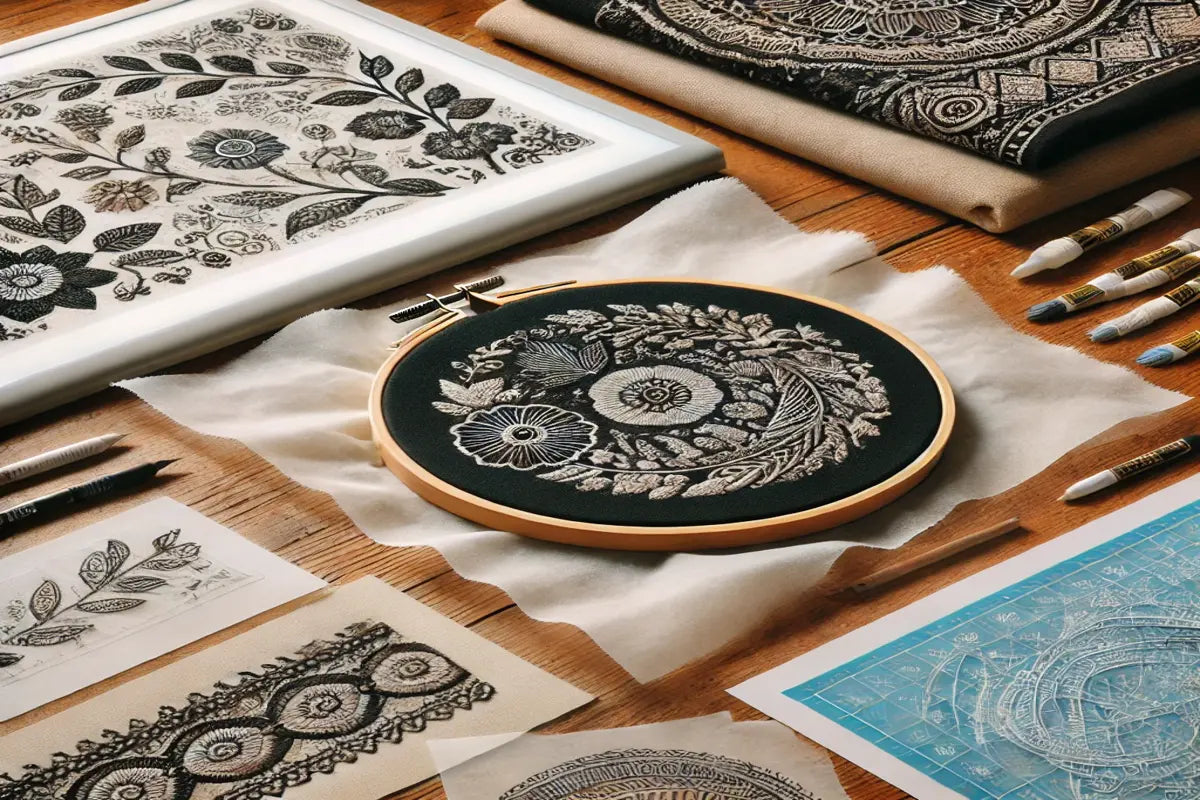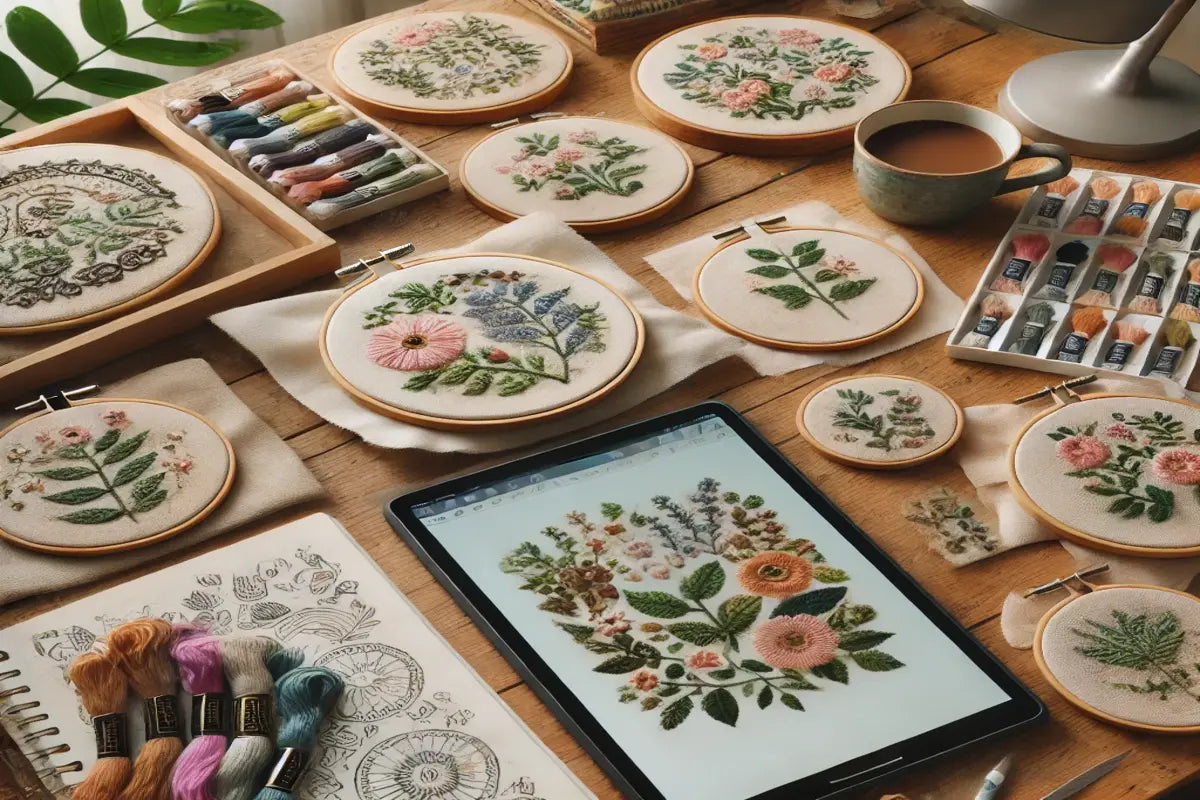
4 Tips for Transferring Embroidery Patterns By The Basic Threads
Transferring embroidery patterns onto fabric is an essential step in achieving beautiful and precise designs. Whether you're a beginner or an experienced embroiderer, using the right transfer method can make all the difference in your stitching process. In this blog, we’ll explore four effective tips to help you transfer embroidery patterns with ease and accuracy.
1. Use a Water-Soluble Stabilizer for Intricate Designs
A water-soluble stabilizer is an excellent option for transferring complex embroidery designs, especially on delicate fabrics like silk or velvet.
How to Use:
✔️ Print or trace your design onto the stabilizer.
✔️ Stick or pin it onto your fabric.
✔️ Stitch directly through the stabilizer and fabric.
✔️ Once finished, rinse with water, and the stabilizer dissolves, leaving only your embroidery.
Best For: Highly detailed patterns, dark fabrics, and non-transparent materials.
2. Try the Tracing Method for Light Fabrics
For light-colored or semi-transparent fabrics, the tracing method is a simple and effective way to transfer your embroidery pattern.
How to Use:
✔️ Place your fabric over the printed pattern and tape both onto a lightbox or window.
✔️ Use a water-soluble fabric pen, chalk pencil, or fine-tip marker to trace the design onto the fabric.
✔️ Remove the pattern and start stitching.
Best For: Cotton, linen, and other lightweight fabrics.
3. Use Heat Transfer Pens or Pencils for Permanent Lines
Heat transfer pens or pencils create a design that becomes visible when ironed onto fabric. This method is great for embroidery patterns that require precise, long-lasting outlines.
How to Use:
✔️ Print or trace your design onto regular paper using a heat transfer pen/pencil.
✔️ Place the paper ink-side down on your fabric.
✔️ Apply heat with an iron (without steam) for a few seconds.
✔️ The design will transfer onto the fabric, ready for stitching.
Best For: Thick fabrics, repeating designs, and patterns that don’t require disappearing lines.
4. Use Carbon or Transfer Paper for Quick Results
Carbon or transfer paper is a reliable method to transfer embroidery patterns onto fabric with minimal effort.
How to Use:
✔️ Place a sheet of carbon or transfer paper between the fabric and your printed pattern.
✔️ Use a stylus or pencil to trace over the design, pressing firmly.
✔️ The pattern will transfer onto the fabric, giving you clear guidelines for stitching.
Best For: Dark fabrics, bold designs, and quick transfers.
Final Thoughts
Choosing the right embroidery transfer method depends on the fabric type, pattern complexity, and personal preference. Whether you opt for a water-soluble stabilizer, tracing, heat transfer, or carbon paper, each method ensures that your embroidery design is clear and easy to follow.
Are you ready to start your next embroidery project? Try these tips and share your experience with us! Happy stitching!

